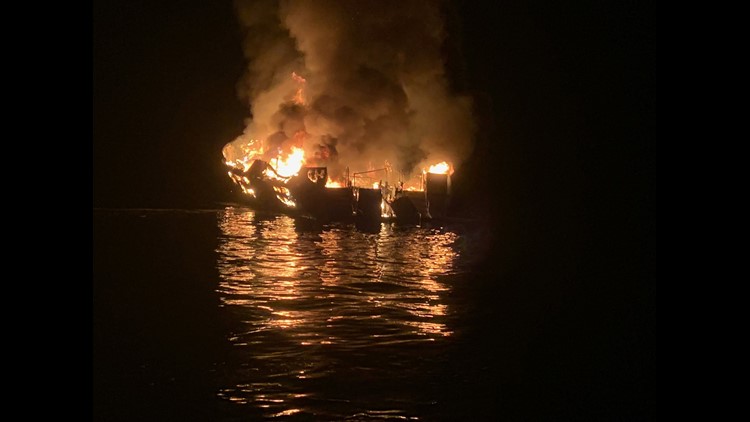The Conception dive boat, which sunk on Labor Day killing 34 people off the coast of California, did not have a crewmember on roving overnight watch as required by its certificate, according to the National Transportation Safety Board’s preliminary report and NTSB Chairman Robert Sumwalt.
“A crewmember sleeping in the wheelhouse berths was awakened by a noise and got up to investigate,” the report says. “He saw a fire at the aft end of the sun deck, rising up from the salon compartment below. The crewmember alerted the crew behind the wheelhouse. As crewmembers awoke, the captain radioed a distress message to the Coast Guard.”
Sumwalt told CNN in an interview that the incident is a “horrible, horrible tragedy” and the worst US transportation accident in some time.
The report came as experts are giving alarming safety assessments of small passenger and recreational vessels like Conception.
The preliminary report made no recommendations for safety improvements. The NTSB typically waits until its investigation is completed to make recommendations.
Truth Aquatics, owner of the Conception, declined to comment after the report was released.
Small passenger and recreational vessels
The fleet of commercial diving and pleasure craft are aging due to a 1920s law that requires commercial vessels be built in the US.
One marine firefighting expert, Tom Guldner, a retired New York firefighter and now president of Marine Firefighting Inc, called this type of boat a “floating bomb,” because they carry hundreds of gallons of fuel but are subject to what this expert saw as lax safety regulations. Meanwhile, safety and fire experts are warning that marine regulations put passengers at risk.
Rod Jones, a captain in California with 31 years of experience, said many charter companies cannot afford the cost of building a new boat in the US, and as a result, vessels are operated for as long as possible.
“You can’t take enough divers out there to make enough money to pay for building these boats,” Jones said.
“The system is just so broken that it’s made the public very, very unsafe,” he said. “We talk about this in the industry all the time.”
Experts also voice concerns that the standards that once fit have not kept up with the time — including the size of exit hatches — and that older craft can be grandfathered in unsafe ways.
The Coast Guard said because the Conception accident is still under investigation, it cannot comment on potential changes to regulations.
“It is too early in the Conception investigation to determine if there will be any regulatory changes related to the Passenger Vessel industry,” Lt. Amy Midgett told CNN in a statement. “The National Transportation Safety Board and the Coast Guard will conduct thorough and detailed investigations to determine potential casual factors associated with this tragedy.”
Experts say the primary fire risks onboard include the fuel, the engine, the electrical components and any kitchen appliances if the ship includes a galley.
“The potential fire risks on a vessel are very similar to the risks in a residence,” said Lawrence Russell of the National Fire Protection Association.
However, the similarities end there.
“It’s not as easy to run out into the front yard,” said Guldner, the retired New York firefighter and now president of Marine Firefighting Inc.
The options are to either “put the fire out or you’re going to be swimming,” he said.
This story is breaking and will be updated.



